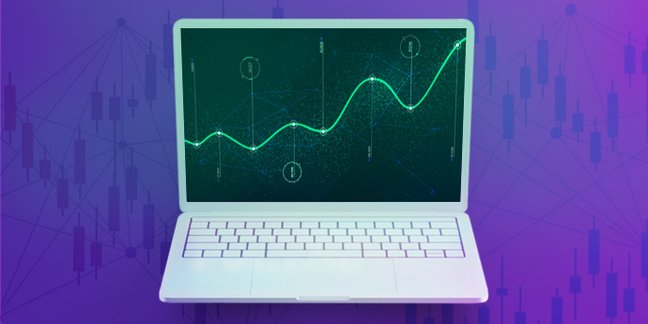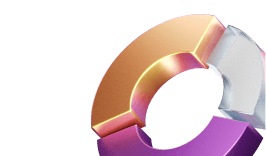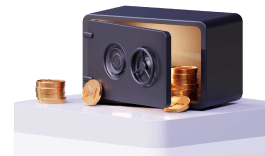Neo Wave Pattern and Theory Explained
R. N. Elliot discovered the orthodox Elliot wave back in the 1930s. In his work, Elliot originally stated that the stock market never moved randomly. It moved in a specific systematic manner following both natural laws and Fibonacci numbers.
As we know today, it is also affected by some outer factors that include central bank activities, the geopolitical situation, economic development, and many other crucial parameters. Elliot described price movements as waves.
Neo Wave comes as an advanced interpretation of the Elliot wave. It comes with newer and more up-to-date patterns as well as rules that make it possible to increase overall objectivity.
This article will provide beginner traders and intermediate traders with a detailed explanation of both the Neo Wave theory, and the Neo Wave pattern, as well as an explanation of the Elliott Wave Theory (which is tied to the Neo Wave Theory).

This is done in order to help traders to understand the link between the two theories, and to identify why it is a theory that should be considered for your trading system.
This article will discuss how the Neo Wave Theory is linked to the Elliott Wave Theory, and why it is considered by many professional traders to be more reliable in terms of predicting future trends within wave analysis charts.
Neo Wave Theory Explained
As stated earlier, the Neo Wave pattern is an advanced version of the Elliott Wave theory. It controls the way charts are plotted as well as the type of data traders generally use to draw on those charts. Generally, when we say “data”, we mean the cash data that does not expire.
In simpler words, Neo Wave helps traders understand how specific data is plotted. Users will not use bar charts in their traditional way. They will use so-called wave charts, which allow us to see how the market price action flows from high to low and vice versa within a specific timeframe. With this data in mind, one can make more accurate predictions.
Key takeaways
- It is a type of technical analysis method
- It is used to identify price patterns
- Price patterns are indicated in the form of ‘waves’
- In addition to mathematics, trader opinions (sentiment) also indicate predictions
- Elliot Waves are used to predict where prices are headed
To fully understand the concept of the Neo Wave Theory, it’s important to make sure that you have fully understood the Elliott Wave Theory first.
Neo Wave Theory is an advanced form of the Elliott Wave theory, which is a type of technical analysis that professional traders use for the purpose of identifying price patterns that appear regularly (in waves on a trading chart), and are also tied to the consistent changes in trader psychology and sentiment.
Simply put, Elliott Wave Theory measures how professional traders feel about certain investments, and the waves indicate the shifts in overall opinions regarding the investments, as well as the shifts in price patterns in general.
Elliott Wave Theory works on the hypothesis that the movements in stock prices are able to be predicted, since they regularly shift in upward and downward patterns (otherwise known as waves), and therefore, it is possible to predict where the stock prices might be headed in the future.
The History behind the Neo Wave Theory
Glenn Neely, a financial analyst, developed the neo-wave pattern. Originally, it was an expanded version of the Elliot theory with the same idea and concepts used in the foundation.
Later, Neely applied different techniques to analyze waves. He aimed to minimize perceived contradictions and subjectivity that usually referred to the original R. N. Elliot’s theory. What’s more, Neely tried to turn the pattern into a more powerful prediction instrument.
As a result, the Neo Wave theory grew into a separate discipline featuring unique rules, specific requirements, and factors. New corrective chart patterns were developed including:
- The neutral triangle;
- The Diametric formation;
- The 5th Failure Terminal;
- The 3rd Extension Terminal.
The logic behind the pattern relies on time heavily. Traders use the pattern’s time frame duration to understand if the pattern is completed or still plotted. It is possible to combine the Neo Wave pattern with other technical indicators and develop a more enhanced and efficient trading strategy.
Elliott Wave Theory Relation to Neo Wave Theory
Key takeaways
- Neo Wave Theory is an extended version of Elliot Theory
- There are more rules in Neo Wave Theory
- Elliott Wave Theory is more subjective, and therefore less accurate
- Neo Wave Theory is more objective, and therefore more accurate
The author of the Elliott Wave Theory, R.N. Elliot, originally stated that the stock markets do not move in a random manner, rather, they actually move in a systematic way, following Fibonacci numbers, as well as natural laws.
The movement within the prices is displayed on charts in what we know as ‘waves’. Price movements within the waves are then classified into two broad classifications: Impulsive Waves and Corrective Waves.
The more complex the structure of the market, the less likely it is that the Elliott Wave Theory can be effective in predicting price movements. This is where the subjective nature of the Elliott Wave Theory comes in, and therefore, it introduces subjective bias and inaccuracies.
Moreover, this is where the Neo Wave Theory comes into play. The Neo Wave Theory has more than 15 disparate rules which seek to define a basic impulse pattern.
Therefore, the Neo Wave Theory reimagines how professional traders can view the price movements before they make their predictions, and it serves to de-simplify the waves, in order to improve the potential for their accuracy.
up to 200%

from 0 pips

Trading platform

Neo Wave Theory
Key Takeaways
- Neo Wave Theory seeks to reduce subjectivity, and increase objectivity
- It seeks to heighten the accuracy in terms of predicting future trends
- There are several different types of additional corrective chart patterns
- Timing is a very important aspect of Neo Wave Theory
The Neo Wave Theory is a newer take on wave analysis, and it is argued by the creator of the approach (financial analyst, Glenn Neely) and his contemporaries, that this approach is actually much better for predicting future price movements, and therefore, a more reliable wave trend indicator for professional traders to use.
This is because the theory seeks to minimize the subjective nature of the Elliott Wave Theory, and thereby improve upon the objectivity of the wave analysis, while also improving upon the overall accuracy in terms of the predictiveness of the wave analysis.
The Neo Wave Theory introduces extra rules and factors that analysts have to take into consideration, as well as additional corrective chart patterns, including the 3rd Extension Terminal, the 5th Failure Terminal, and the 3rd Extension Terminal.
The timing factor is also an essential part of the logic behind this theory, as the duration of the different types of pattern segments is utilized in order to assess whether a pattern has actually completed or not.
This theory states that if patterns take too much time, or if they cease too quickly, they cannot be considered to be full patterns.
Key Aspects of Neo Wave Theory
- Self-confirmation: whatever occurs within the markets after you made your predictions and subsequent trades indicates whether or not your analysis was correct beforehand.
- Self-defining price times and limits: small degree patterns (according to the rules of Neo Wave Theory) cannot be longer in terms of time, in comparison to large degree patterns.
- Logic: If a professional trader can identify a strong correction on the chart, this is a strong indication of a potentially powerful move, and perhaps one that a trader should then act upon.
Neo Wave Pattern Explained
The Neo Wave pattern (also known as the Neo Wave symmetrical formation) is a type of 9-legged formation, and it does not include the x-wave. Furthermore, it is the only type of wave formation that allows for complexity, time, and price similarity within each wave formation.
In addition, within most neo waves, the time, price coverage, and complexity will be inherent within the waves, and will be similar with each wave. This similarity is not something that can be prevalent within any other type of wave formation.
Putting the Neo Wave Theory to the Test
If you feel that you have an initial understanding of the Neo Wave Theory, but you wish to put it to the test in order to see how well you fully understand the theory and its application to trading, you can do so by opening a demo trading account with MTrading!
Not only will you gain access to a virtual trading environment, where you can trade with virtual funds, with virtual versions of stocks and investments, and use real information from the markets, but you will also be able to make use of the state-of-the-art MetaTrader 4 trading platform!
With this platform, you can gain access to tons of trading graphs, formulas, strategies,tools, techniques, and so much more. It really is the best place to test the Neo Wave Theory to see how it compares to other forms of technical analysis, and to see if it works within your trading strategy!
What’s more, once you’re ready to make the transition to the live markets, you can easily do so, as the account is designed in a way that enables you to switch seamlessly between a demo account and a live account. So what are you waiting for?
This material does not contain and should not be construed as containing investment advice, investment recommendations, an offer of or solicitation for any transactions in financial instruments. Before making any investment decisions, you should seek advice from independent financial advisors to ensure you understand the risks.
